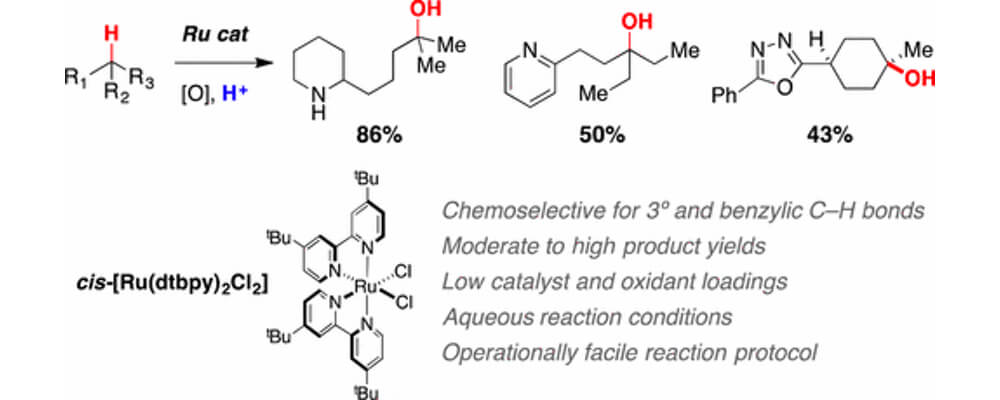Ruthenium-Catalyzed C–H Hydroxylation in Aqueous Acid Enables Selective Functionalization of Amine Derivatives
James B. C. Mack, John D. Gipson, Justin Du Bois, and Matthew S. Sigman
J. Am. Chem. Soc.,
2017, 139, (28), 9503-9506; DOI:10.1021/jacs.7b05469

06/2017
The identification, optimization, and evaluation of a new catalytic protocol for sp3 C–H hydroxylation is described. Reactions are performed in aqueous acid using a bis(bipyridine)Ru catalyst to enable oxidation of substrates possessing basic amine functional groups. Tertiary and benzylic C–H hydroxylation is strongly favored over N-oxidation for numerous amine derivatives. With terpene-derived substrates, similar trends in reactivity toward tertiary and benzylic C–H bonds are observed. Hydroxylation of chiral tertiary centers is enantiospecific in spite of the ionizing strength of the reaction medium. Preliminary kinetics experiments show a marked difference in reactivity between isomeric cis- and trans-Ru catalysts suggesting that the catalyst is configurationally stable under the reaction conditions.